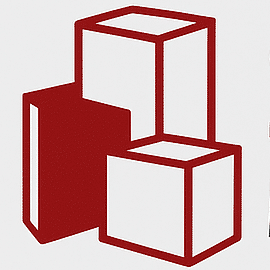
A move can be thrilling and nerve-wracking at the same time. One of the best ways to reduce stress and make sure your move goes smoothly is to protect your belongings with moving insurance. Moving insurance is particularly useful when you are moving expensive or sentimental items. It’s all too easy for belongings to get damaged in the truck or during the loading and unloading process. With the right insurance coverage, you won’t have to worry about the cost of replacing expensive furniture or technology after you move.
What Are The Different Types of Moving Insurance?
There are different types of insurance that provide you with different types of protection during your move. It’s important to research the type of coverage that you want in order to make sure you won’t be dealing with any surprises if your belongings are damaged. There are different options available depending on whether you are hiring professional movers or handling the move yourself. Here are the main types of moving insurance.
Types of Moving Insurance for Professional Moves
-
Full-Value Protection
Under this insurance plan, the moving company is responsible for fully replacing, repairing, or reimbursing any damaged belongings. However, each moving company has a different asset value calculation method. This full-value protection moving insurance offers the best protection but comes with higher premiums. So, it’s best to discuss policy details and deductibles before getting the coverage.
-
Basic Released-Value Protection
Released value protection, or basic carrier liability, is the basic moving insurance coverage required by law. With this plan, the moving company is only responsible for offering 60 cents per pound per item. For example, if you have a 20-pound T.V., and it gets damaged during the move, the company will reimburse you $12.00 (60 cents x 20 pounds).
-
Third-Party Moving Insurance or Separate Liability Coverage
Depending on your moving company, you may wish to purchase insurance from a third-party insurance company. This provides you with additional protection for your belongings. Premiums, deductibles, and coverage will vary between companies, so make sure to do your research.
Types of Moving Insurance for DIY Moves
-
Rental Truck Coverage
If you’re preparing to move by yourself, rental truck coverage protects you in the event of an accident. However, this coverage will likely only cover damage to the truck, not to your belongings.
-
Container and Contents Protection
You can get this insurance coverage from companies that provide portable storage containers. This insurance coverage protects against damage or loss of belongings during storage.
-
Homeowners Insurance
Your homeowners insurance may cover damage that occurs during your move, depending on the cause of the damage. Check with your insurance provider before you move in order to understand exactly what coverage you already have.
Factors That Affect Moving Insurance Rates
Different factors affect insurance rates. Here are a few of the main factors that can increase or decrease the cost of your coverage.
-
Moving Distance
The distance of the move affects moving insurance rates. The higher the moving distance, the higher the insurance rates are likely to be. A long-distance move comes with an increased risk of theft or damage.
-
Specialty Items
If you are moving specialty items, such as antiques, collectibles, or valuable technology, this may increase the cost of your coverage.
-
Type of Coverage
The type of coverage also affects the moving insurance rate. For instance, full value protection, which provides greater insurance coverage, is more expensive than released value coverage, which offers limited protection at a lower cost.
What Does Moving Insurance Cover?
Here’s a rundown of what moving insurance covers. The exact details vary from company to company.
- Damage that occurs during the loading or unloading process
- Damage that occurs during the packing or unpacking process if the moving company is packing and unpacking
- Any belongings that are lost, stolen, or damaged during transit
- Any other damage caused by the moving company
How to Purchase Moving Insurance
It’s important that you research and purchase moving insurance before you begin packing and transporting items. Here’s how to purchase moving insurance:
Step 1: Research and compare moving insurance options
It’s important to compare the coverage options offered by various moving companies before you finalize your moving plan. Ask questions about the exact coverage you’ll receive, and make sure you know how the value of items is calculated. Look at customer ratings and reviews to determine whether the moving company delivers insurance payments efficiently.
Step 2: Read the terms and conditions
Ensure that you clearly understand the terms and conditions of the insurance coverage you choose before signing the policy. If you need clarification, ask your insurer about the exclusions and limitations of the policy.
Step 3: Purchase the insurance policy
After selecting a policy that meets your budget and requirements, purchase it immediately to make sure that all your belongings are protected before you begin moving.
Do You Need Moving Insurance?
The best thing you can do before you move is to hire professional movers who are insured. However, understanding moving insurance types and choosing the best moving insurance coverage for your items helps protect your belongings from unpredictable events.
So, whether you are moving across town or out of state, moving insurance is a wise investment for protecting the things you care about the most. If you’re ready to plan your move, contact Serenity Moving Services today.






